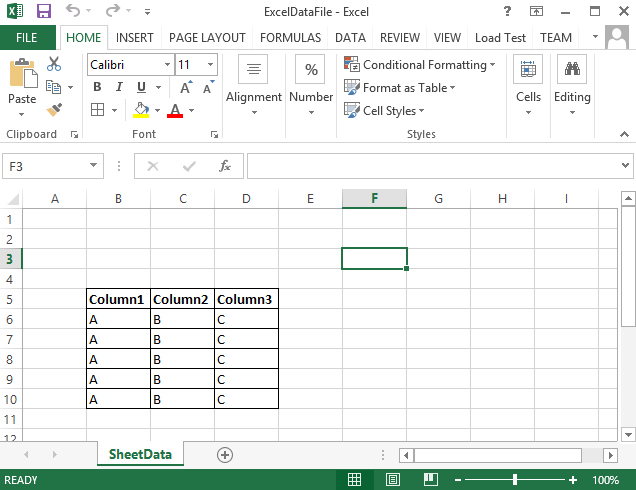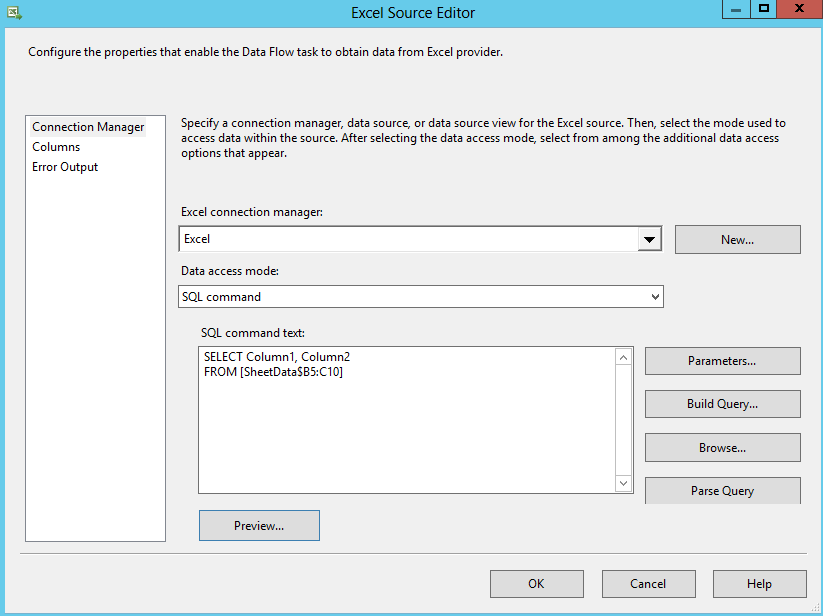I tried to replicate this test scenario using VS 2012 with a little bit more luck but still with almost no error messages to investigate after the crash.
So here is a sample Excel file:
And let's say, initially I needed to load only Column1 and Column2 data. So my data source in the data flow SSIS task with the SQL command
SELECT Column1, Column2 FROM [SheetData$B5:C10]
looked like this:
This worked well really well, until a customer requested to add a reference to the 3rd column of the file into the scope of the data transfer and I easily made this adjustment in the SQL command:
SELECT Column1, Column2, Column3 FROM [SheetData$B5:C10]
And right after pressing OK button in the dialog window the whole Visual Studio crashed with no warning message. So that's why I didn't know why it was happening .
After reopening the SSIS package, turning it to the [Offline Work] mode, changing the SQL command with the reference for the Column3 and then executing the package I was able to get more details for the original error:
in VS2008 it was "The external metadata column collection is out of synchronization with the data source"
in VS2012 it was "Complete metadata information for the data source is not available"
Refreshing metadata on the datasource didn't help, my VS kept crashing on this simple step of adding Column3 into the SQL command of the datasource task.
And a bit later I realized that the whole problem was in the SQL command itself, particularly in the FROM clause of it. If you remember the Excel file table and the original range reference was made for 2 columns using this statement: [SheetData$B5:C10]. However Column3 was out of scope of this range and my final SQL command should have been written this way:
SELECT Column1, Column2, Column3 FROM [SheetData$B5:D10]
Enjoy your day and happy data adventures!




